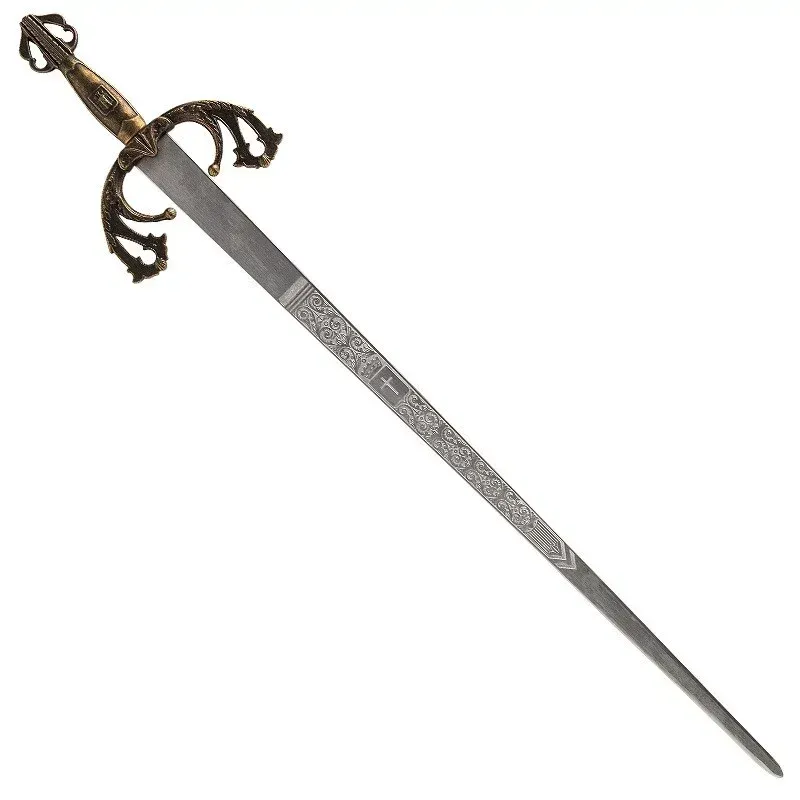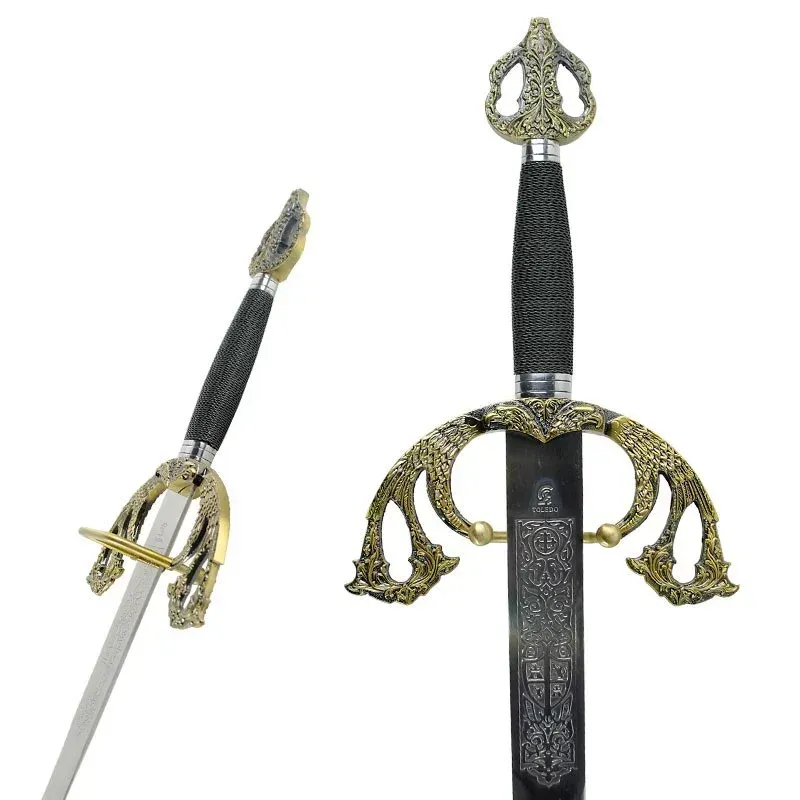Whose was the Tizona Sword?
The Tizona Sword, one of the most emblematic pieces in Spain's history, is deeply rooted in the legend of Rodrigo Díaz de Vivar, the renowned Cid Campeador. More than a weapon, the Tizona is a symbol of the Reconquista and an icon of Spanish medieval culture. However, its history—blending myth, literature, and documented history—has been the subject of debates regarding its origin, authenticity, and ownership.

Origins and Attribution of the Tizona Sword
The Tizona is one of two swords attributed to the Cid Campeador, alongside the Colada. According to the "Cantar de Mío Cid," one of the earliest literary works mentioning this sword, Rodrigo Díaz de Vivar acquired the Tizona after defeating King Búcar of Morocco in Valencia. Later on, he gave it to the Infantes of Carrión as part of his daughters' marriages in an effort to strengthen family and political alliances.
However, it is important to note that the first written reference to the Tizona dates to at least a century after the Cid's death. This raises reasonable doubts about how much of its story is based on oral and literary accounts versus historical facts.
Historical Documentation of the Tizona
Technically, the Tizona makes its appearance in documentary records in 1503, when it was included in an arms inventory of the Alcázar of Segovia, conducted by Gonzalo de Bricio. This reference marked the beginning of its historical recognition beyond the literary framework.
Later, Fray Prudencio de Sandoval (chronicler of the Kings of Castile and León) noted that the sword came into the possession of the Marquises of Falces as a gift from King Ferdinand the Catholic in gratitude for their services. This adds an interesting element regarding its ownership in noble hands.
Controversies Over Ownership
The Tizona has been the subject of legal disputes that extended well into the 21st century. In 1987, a previous Marquis of Falces, Pedro Velluti de Murga, was declared the universal heir to the sword. However, in 2016, the Supreme Court of Spain ruled that another Marquis of Falces, José Ramón Suárez-Otero Velluti, was the sole legitimate owner of the sword, overturning previous decisions that granted shared rights to it.
This resolution was crucial not only to settle the debate over its ownership but also to ensure its preservation and public display as a piece of cultural heritage.
Final Destination and Preservation
In 2007, José Ramón Suárez-Otero Velluti sold the Tizona to a consortium of companies and a foundation, who subsequently donated it to the Community of Castile and León. Currently, the sword is displayed in the Museum of Burgos, where it can be visited by those wishing to see this historical treasure.

Features of the Sword
The Tizona is a weapon whose quality reflects both its purpose and its symbolic status. It has a total length of 93 centimeters, with a blade measuring 79 centimeters, possibly forged in Seville. Its Gothic-style hilt was added in the 15th century, indicating modifications made after its original creation.
The high-quality steel, attributed to Andalusian craftsmen, gives the Tizona unique properties, both aesthetic and functional, making it a masterpiece of medieval blacksmithing.
Cultural Significance
The Tizona transcends its nature as a physical weapon to become a symbol laden with cultural meaning. Its mention in the "Cantar de Mío Cid" ties it inseparably to the figure of the Cid Campeador, one of the most iconic heroes of the Spanish Reconquista. Additionally, the inscription on its blade, "IO SOI TIZONA FUE FECHA EN LA ERA DE MILE QUARENTA," reinforces not only its historical character but also its prestige as a relic of a turbulent and glorious era.
Technical Specifications
| Total Length | 93 cm |
| Blade Length | 79 cm |
| Hilt Style | Gothic |
| Material | Forged Andalusian steel |
















